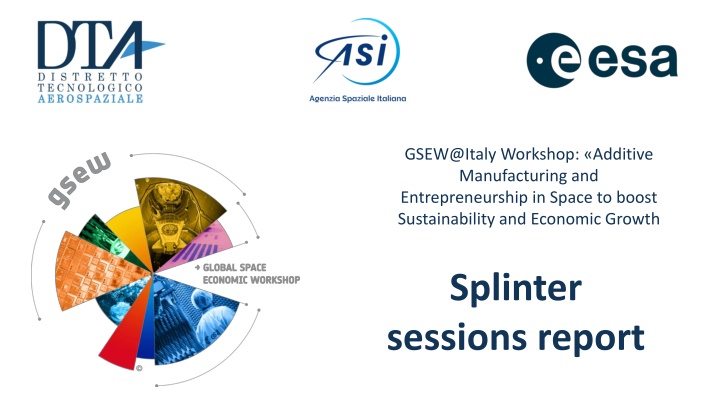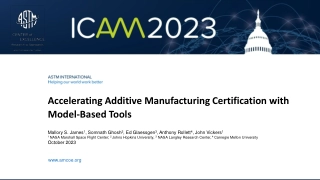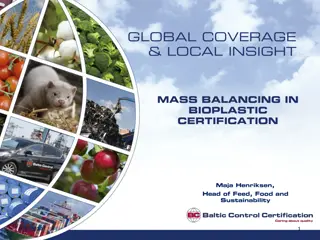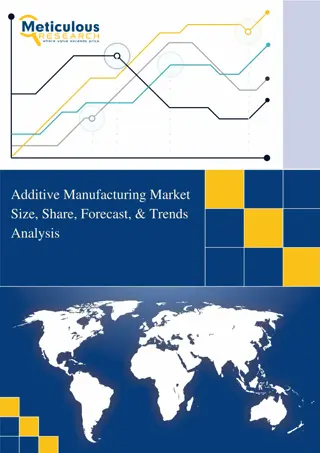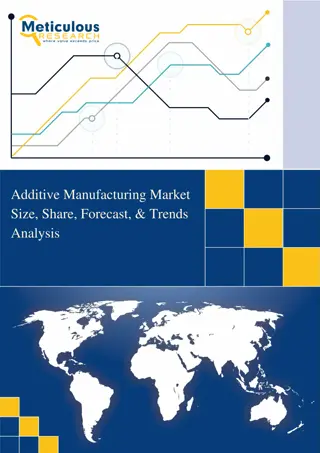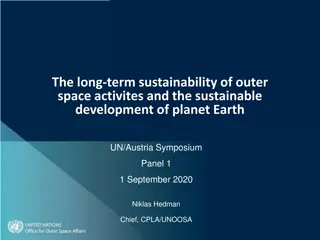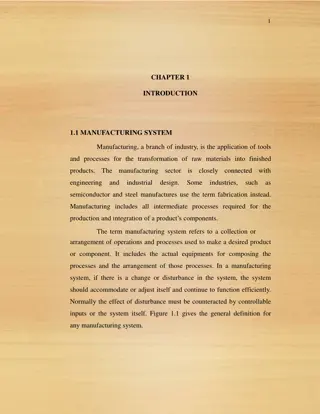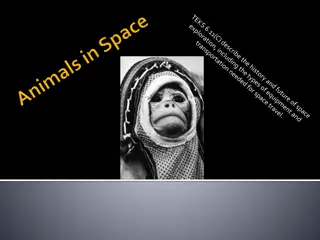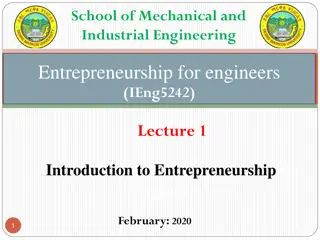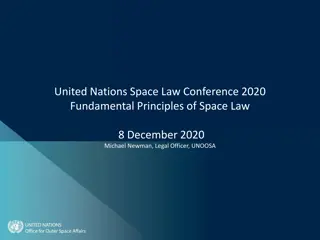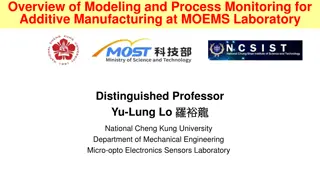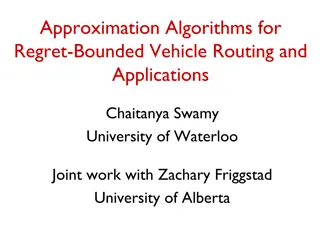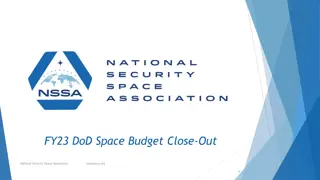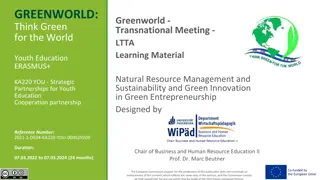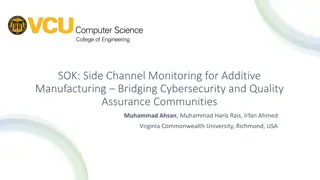Additive Manufacturing and Entrepreneurship in Space: Boosting Sustainability and Growth
The GSEW@Italy Workshop focused on additive manufacturing in space to drive sustainability and economic growth. Sessions delved into capacity building, design for additive manufacturing, mentoring for newcomers, and business opportunities. The technologies discussed included design freedom, cost and lead time reduction, in-situ manufacturing for logistical simplification, and heat exchangers. Key messages emphasized the importance of additive manufacturing for custom parts, emergency situations, and operational flexibility, as well as the need for mentoring and sharing capabilities among actors. The session highlighted the potential for additive manufacturing to revolutionize space entrepreneurship and drive innovation.
Download Presentation

Please find below an Image/Link to download the presentation.
The content on the website is provided AS IS for your information and personal use only. It may not be sold, licensed, or shared on other websites without obtaining consent from the author.If you encounter any issues during the download, it is possible that the publisher has removed the file from their server.
You are allowed to download the files provided on this website for personal or commercial use, subject to the condition that they are used lawfully. All files are the property of their respective owners.
The content on the website is provided AS IS for your information and personal use only. It may not be sold, licensed, or shared on other websites without obtaining consent from the author.
E N D
Presentation Transcript
GSEW@Italy Workshop: Additive Manufacturing and Entrepreneurship in Space to boost Sustainability and Economic Growth Splinter sessions report
Goals of splinter sessions The goal of the afternoon session of the GSEW@Italy Workshop Additive Manufacturing and Entrepreneurship in Space to boost Sustainability and Economic Growth was to get concrete suggestions on capacity building around Additive Manufacturing solutions regarding Materials, Technologies and Softwares.
Summary of Technologies session Key messages: Design for additive is crucial to harness the potential of AM and reduce costs Need for mentoring to support newcomers in AM technologies and help them understand what AM can do for them In-space AM offers very promising perspectives
Session: Technologies Coordinator: Advenit Makaya Design freedom (geometries and performance only achievable by additive) Very good tool for emergency situation: allows customised parts (e.g. obsolete parts) and operational flexibility Additive manufacturing for in-situ manufacturing: simplify logisitics, reduce inventory (particularly for small components); in-situ maintenance and repair; avoiding constraints related to the launch phase => avoid over- dimensioning of parts Benefits Cost reduction, lead time reduction Heat exchangers (complex geometries not feasible in a conventional way) Tooling (light-weighting of very large tooling parts) Business Opportunities
Session: Technologies Coordinator: Advenit Makaya Useful actors: incubators, mentors (with required tools, manchines, equipments) to support newcomers in AM technologies Hybrid approach where large actors can develop capabilities and help transfer it to smaller actors who cannot necessarily afford it Integrating AM capability in the company or using external entities?: Depending on the scale of the production: integrate manufacturing in the company (for large series) or externalise. Main Actors Can bring all actors around the table and take leadership in setting a common direction. Can create a framework programme where all actors can align their contribution in a consistent way. Can help actors (in particular SMEs) understand what they cando with these technologies (otherwise only the same players will use these technologies) Improve communication and information on available tenders and timing of intended tenders (in particular ESA) Role of EU/GOV/ Agencies
Session: Technologies Coordinator: Advenit Makaya Cost higher than conventional manufacfturing. Cost of equipment (in particular for SMEs) Design for additive is crucial to harness the potential of AM and reduce costs: otherwise the cost is prohibitive compared to conventional manufacturing technologies Limited range of materials with heritage and extensive research. Issue with porosity in particular for composites. Lack of understanding which of the AM technologies to use and how to adapt design accordingly Lack of skillful workforce for the relatively new technology field Understanding of the risks. In-space manufacturing: trade-off needed to decide better approach: AM in-situ or on manufacturing on Earth. Challenges High performance computing (simulation) AI provide capability which human or traditional computing cannot provide Develop adequate post-processing techniques Develop NDT for AM, harnesses progress in these technoques Having a holisitc view of the technology (design, manufacturing, post-processing) New initiatives to train adequate workforce: e.g. new training programmes, training approach New programmes to support newcomers to AM and train industry actors to design for additive approach Required Capabilities
Summary of Materials session Key message: Normative in Europe is too restrictive to allow the wide use of new methods and products related to advanced manufacturing. A more affordable risk management approach is envisaged, at least for low cost missions.
Session: Materials Coordinator: Marco Di Clemente Development of smart materials, meta-materials, functional and variable properties, hybrid process approach Benefits Business Opportunities High production volume, faster time-to-market Role of EU/GOV/ Agencies Sharing of risk (cost/benefits analysis shuold be assessed in detail), funding opportunities Qualification process through real-time monitoring techniques, need of end-to-end approach for development (materials-process-applications), traceability of supply chain Challenges Required Capabilities Inter-disciplinary teams (material science, technology, manufacturing)
Summary of Enabling SW Technologies session Key message: Several enabling technologies are already available for supporting the adoption of AM in space apps into the entire life cycle (AI, XR, ) Cross-fertilization and technology transfer are mandatory to exploit AM opportunities and to boost the RoI in space apps New competencies, new methodologies and new processes with multi-physics and multi-disciplinary approaches are required Top-down approach is important to effectively drive start-up to innovation and national key-player should be the master
